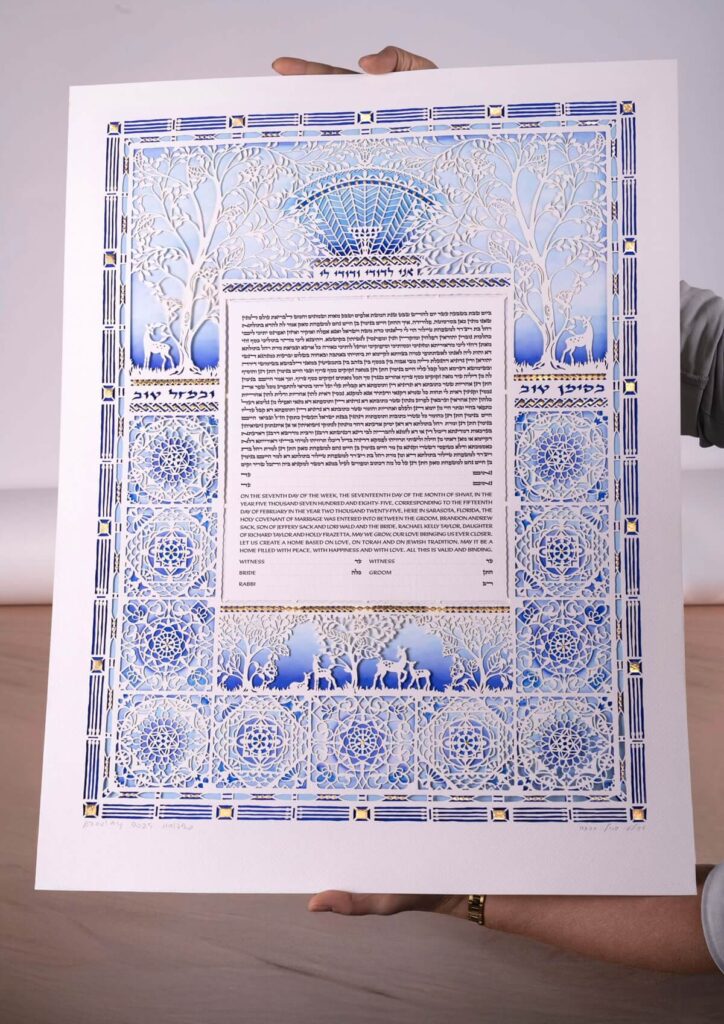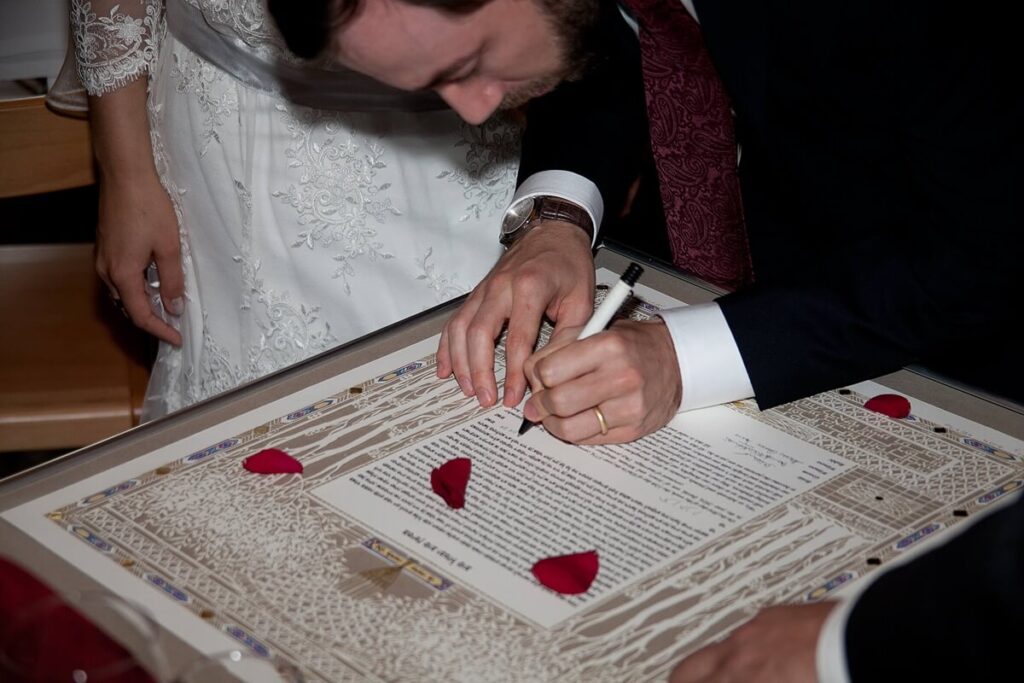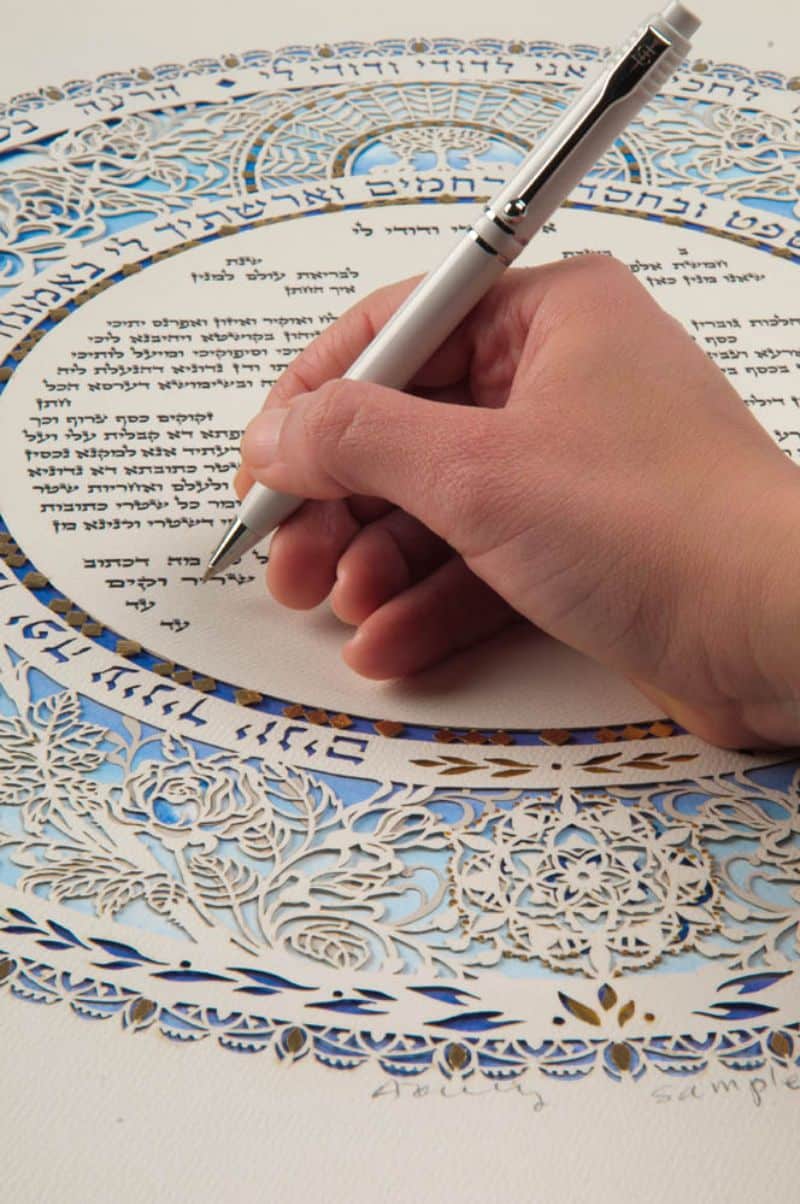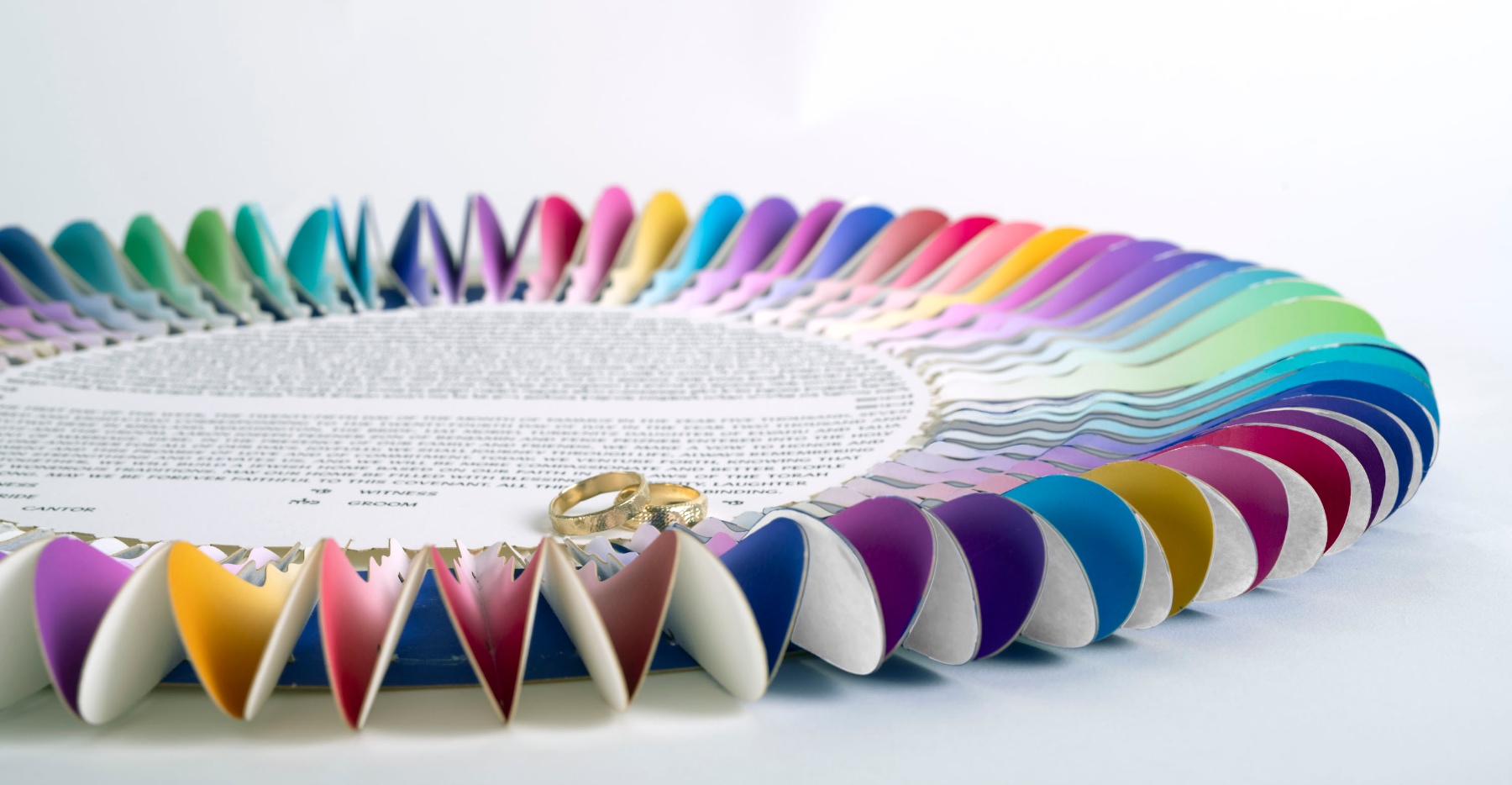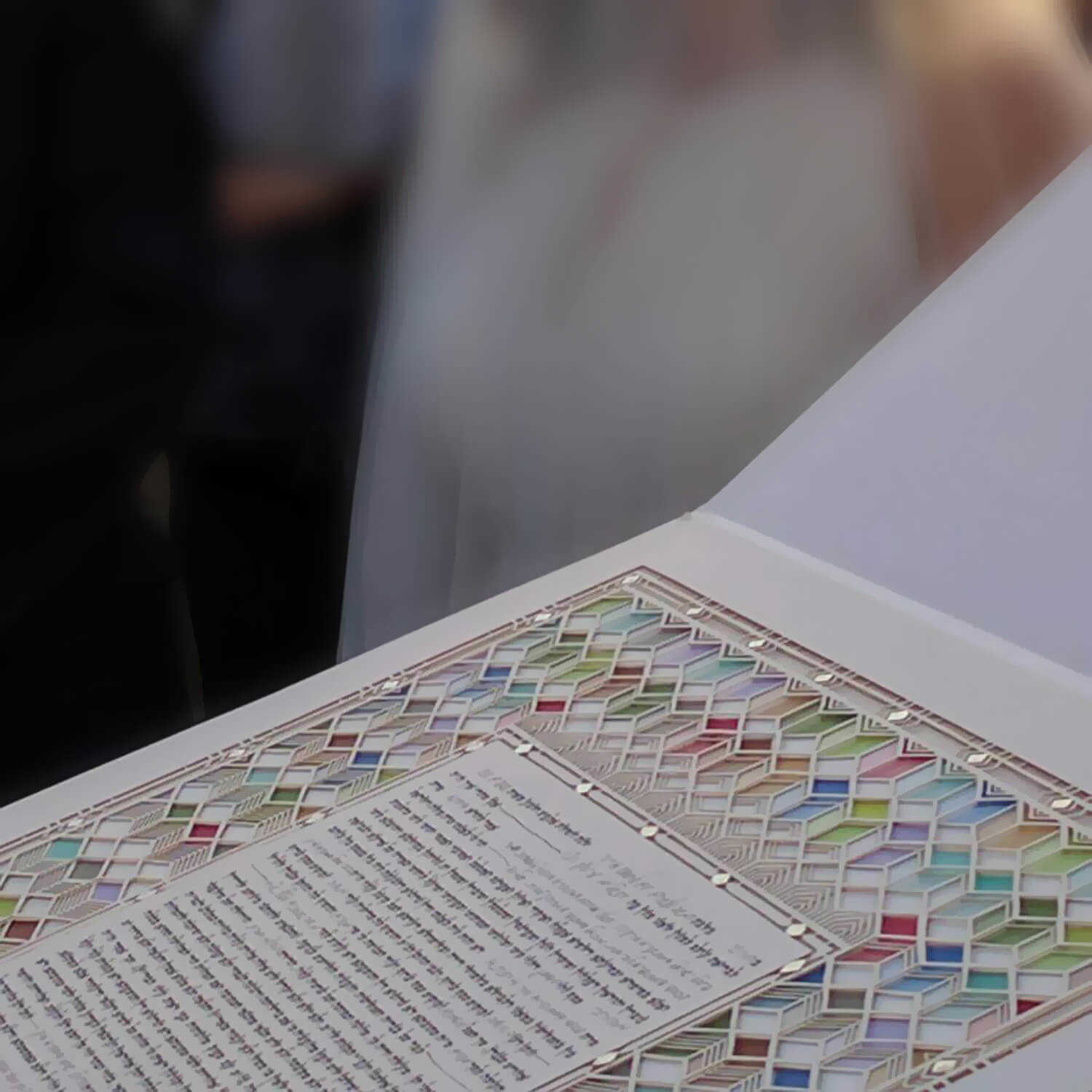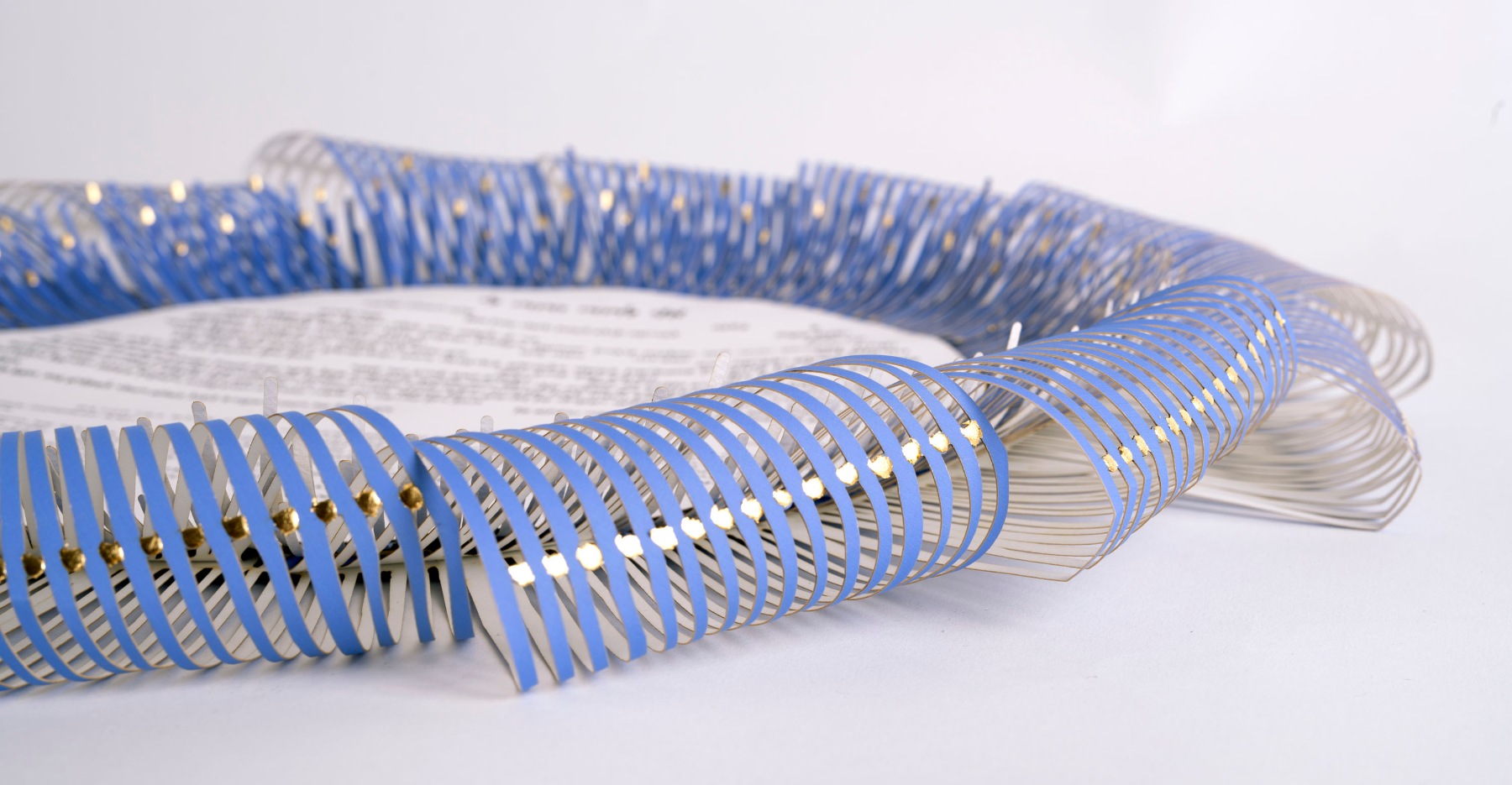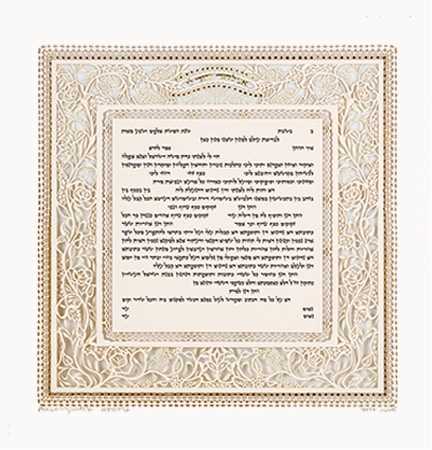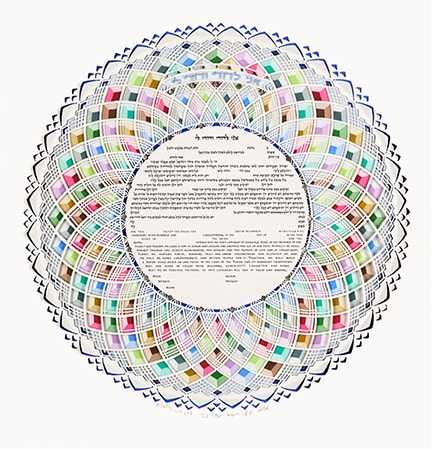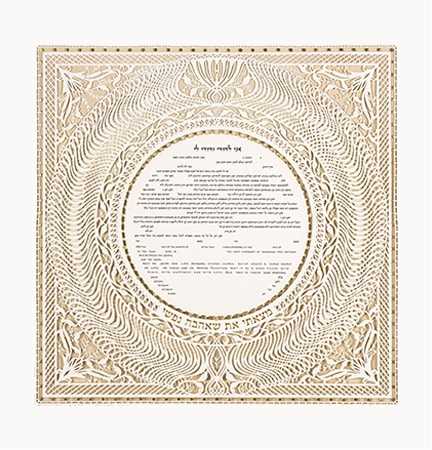Buy a Jewish Marriage Contract – A Timeless Symbol of Love and Tradition
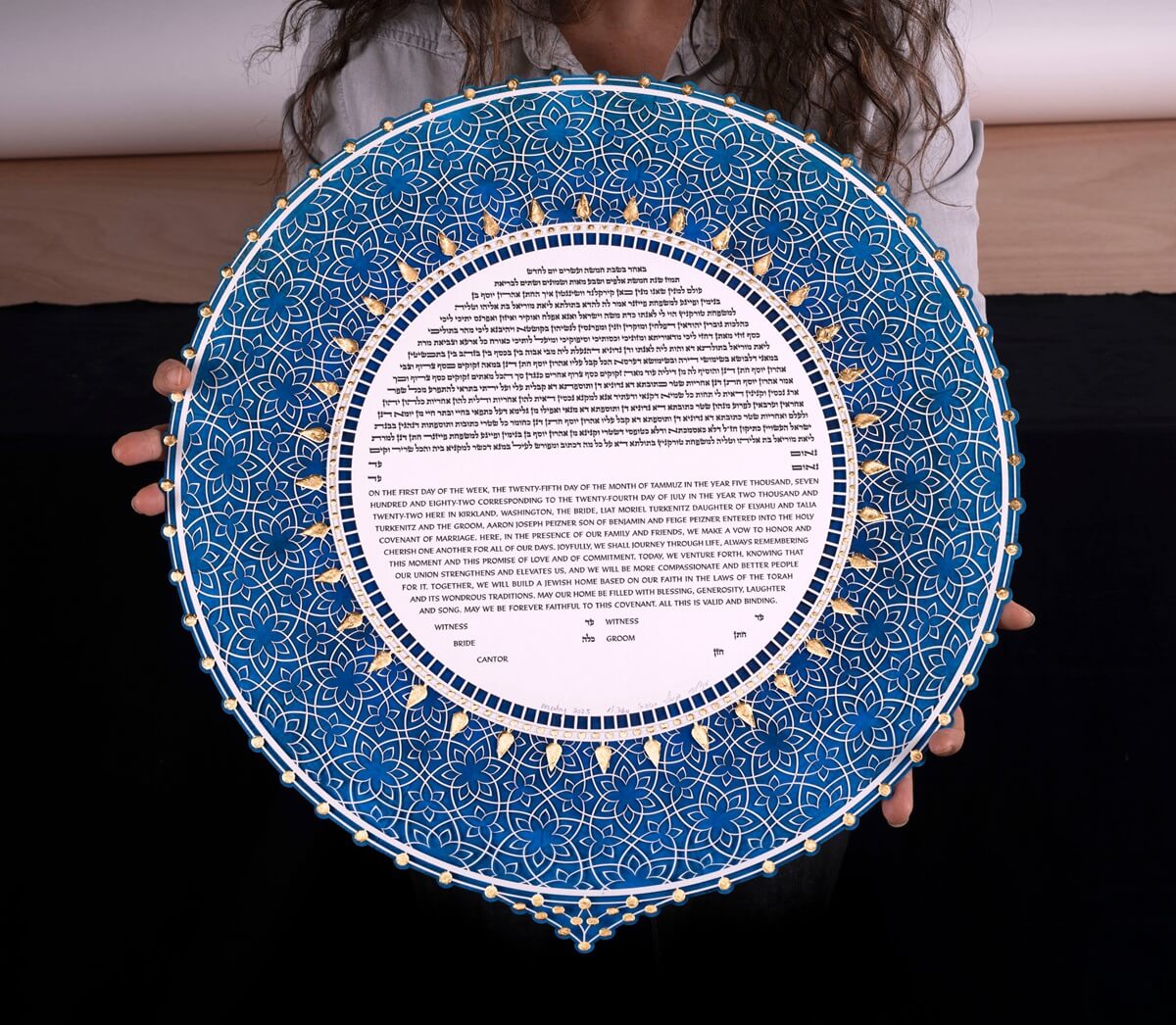
A Jewish marriage contract, known as a ketubah, is far more than just a legal document—it is a cherished traditional document sanctioned by the Talmudic scholars, a spiritual commitment, and a prenuptial agreement that has been part of Jewish weddings for over 2,000 years.
Today, it is not only the binding document that seals a Jewish wedding but it is an artistic document proclaiming the new couple’s wedding vows and their devotion to one another. Rooted in Jewish law and custom, the Ketubah is signed before the wedding ceremony and serves as a formal agreement outlining the responsibilities of the couple, ensuring their mutual commitment to one another. Unlike a secular marriage license, which primarily functions as a legal record of a union, the ketubah carries deep historical, religious, and emotional significance—making it a central element of the wedding ceremony.
At its core, the Jewish marriage contract is a promise. Traditionally, it sets forth the groom’s obligations toward his bride, ensuring her well-being, security, and protection. In ancient times, when women had fewer financial rights, the ketubah provided critical safeguards, guaranteeing that a woman would be supported in the event of divorce or widowhood. Today, the ketubah has evolved beyond its original legal framework to become a meaningful expression of love and partnership. Modern couples often personalize their ketubahs with custom texts that reflect their shared values, promises, and vision for their future together.
What makes a Jewish wedding contract different from a secular one, in modern times, is its spiritual depth and artistic beauty. While a civil marriage license is a government-issued formality, the ketubah is a deeply personal document, often transformed into a stunning work of art. It is not tucked away in a filing cabinet but proudly displayed in the couple’s home, serving as a daily reminder of their vows and the sacred bond they share. The ketubah is not just a contract; it is a testament to love, a celebration of commitment, and a piece of history that connects generations. Whether for traditional, interfaith couples, or same-sex couples: whether a papercut or a fine-art print or hand made modern design, the ketubah remains a timeless symbol of devotion, uniting past and present in one exquisite expression of a binding agreement, a commitment to cherish one another, Jewish heritage.
Why the Ketubah Is an Essential Part of a Jewish Wedding Ceremony
A wedding is one of life’s most profound milestones—a moment when two people come together to build a future filled with love, trust, and shared dreams. In Jewish tradition, this union is not just celebrated; it is formally and spiritually sealed through the signing of the ketubah in the presence of witnesses. More than a mere document, the Ketubah represents a sacred commitment, linking the couple to generations before them and setting the foundation for their life together.
The Importance of Signing the Ketubah Before the Chuppah Ceremony
In a Jewish wedding, the signing of the Ketubah is not an afterthought—it is an integral part of the ceremony itself. Unlike in secular weddings, where wedding vows can be signed at any time, the ketubah must be signed before the Jewish couple stands under the Chuppah (the Jewish marriage canopy). This moment, typically witnessed by close family and friends, is one of the most meaningful parts of the wedding day. It is a quiet, reflective pause before the public celebration, a time for the couple to affirm their commitment in the presence of their loved ones.
Once signed, the ketubah becomes an official binding document attesting to the marriage, setting the emotional and legal tone for the life the couple is about to begin together. The document is then read aloud during the ceremony, making its promises not just personal but also publicly recognized within the Jewish community. This tradition underscores the belief that marriage is not just a private contract but a sacred union blessed and supported by family, friends, and faith.
Different Jewish Denominations and Their Interpretations of the Ketubah
Over time, the role of the Ketubah has evolved, and different Jewish denominations have interpreted its significance in various ways:
- Orthodox Judaism follows the traditional format of the Ketubah, written in Aramaic, focusing on the husband’s obligations and financial responsibilities toward his wife. The text remains legally binding according to Jewish law (Halacha), and the signing is witnessed by two observant Jewish men.
- Conservative Judaism retains the traditional structure of the Ketubah but often includes an additional clause that allows for more egalitarian considerations. Very often the Conservative rabbis will require the Lieberman clause, ensuring fairness in time of divorce.
- Reform and Reconstructionist Judaism offer greater flexibility, often allowing both partners to sign the ketubah, emphasizing a mutual commitment rather than a one-sided obligation. Many couples also opt for English translations or fully customized texts that reflect their unique relationship.
- Interfaith and Secular Humanist, Same-Sex Weddings have embraced the ketubah as a universal symbol of love and commitment, often modifying the wording to include personal vows, humanistic values, or cultural elements from both partners’ backgrounds.
Traditional Elements of a Ketubah
No matter the artistic style or denomination, a Ketubah traditionally includes the following key elements:
1. Names of the Bride and Groom
The ketubah begins by listing the full names of both the bride and groom, often including their Hebrew names. In Orthodox and Conservative ketubahs, these names are followed by their father’s names (e.g., Moshe ben David and Sara bat Avraham). Many modern ketubahs also include matriarchal lineage, acknowledging both parents as part of their heritage.
2. Wedding Date and Location
The document specifies the exact date and location of the wedding, using both the secular (Gregorian) and Hebrew calendars. It also mentions the day of the week in relation to Shabbat, reinforcing the Jewish perspective of time and sacred events.
3. The Groom’s Obligations to His Bride
One of the primary functions of a traditional Ketubah is to outline the husband’s responsibilities toward his wife. These include:
- Providing food, clothing, and shelter.
- Ensuring her emotional and physical well-being.
- Honoring and cherishing her throughout their marriage.
- Committing to a life of shared values and mutual respect.
This section of the Ketubah reinforces the Jewish perspective that marriage is built on love, care, and responsibility, rather than being merely a romantic or symbolic union.
4. Financial Security Clauses in Time of Divorce or Widowhood
A crucial part of the traditional Ketubah is its financial protections for the bride. Historically, when women had limited legal rights, the Ketubah ensured that if the marriage ended in divorce or the husband’s death, the wife would be financially supported.
While modern Jewish couples may not rely on the ketubah for financial security in the same way, this clause symbolizes the commitment to fairness and responsibility in marriage. Today, many couples choose to customize this section to reflect modern values of mutual support.
Differences Between Orthodox, Conservative, Reform, and Modern Texts
As Jewish communities have evolved, so too have the texts of the Ketubah, adapting to different religious perspectives:
- Orthodox Ketubahs:
-
- Follow the traditional Aramaic text.
- Focus on the husband’s obligations toward his wife.
- Require two male observant Jewish witnesses to sign.
- Conservative Ketubahs:
-
- Maintain the traditional structure but often include an additional clause allowing a religious divorce (get) if needed.
- Some include mutual obligations, shifting from a purely one-sided contract.
- Reform & Reconstructionist Ketubahs:
-
- Offer gender-equal language, allowing both partners to express their vows.
- Use Hebrew, English, or bilingual texts.
- Include egalitarian commitments, focusing on partnership and love rather than financial agreements.
- Modern & Interfaith Ketubahs:
-
- Feature completely customized texts, with personal vows.
- Often remove traditional legal clauses and replace them with affirmations of love, wedding vows, respect, and shared values.
- Incorporate artistic elements that symbolize the couple’s relationship.
How Modern Ketubahs Incorporate Egalitarian Language and Personal Vows
In modern times, couples want their Ketubah to reflect their unique relationship and values. Many opt for personalized texts and artistic original designs — including fine-art prints and intricate papercuts that express their commitment in a verbal and visual way that feels meaningful and true to their love story. Some ways modern Ketubahs achieve this include:
- Mutual vows: Instead of the traditional one-sided contract, many Ketubahs now have both partners making promises to each other.
- Inclusive language: Removing gender-specific roles and emphasizing partnership, equality, and shared responsibility.
- Customized translations: Offering English, Hebrew, Spanish, French, or even multiple languages to reflect the couple’s cultural backgrounds.
- Artistic storytelling: Integrating symbols, colors, and themes and artistic traditions that represent their journey as a couple.
Whether you choose a traditional Orthodox Ketubah, a modern egalitarian version, or a completely customized work of art, the most important thing is that your Ketubah reflects the love, commitment, and values you share. More than just a document, it is a testament to your promises, a piece of art for your home, and a reminder of the beautiful journey you are embarking on together.

